War crimes of the armed forces and security forces of Ukraine: torture and inhumane treatment. Second report
Yana, victim's wife on SBU officials:
They have beaten him to death simply. When they came — they took him away to torture him. When they brought his body back — the heels were blue, the feet were blue. He's got some traces of punctures on his hands... I don't know... what they did to him, punctured him or drove the needles under his nails — there were holes on his hands. Each bone has a hole in it. They tortured him like... when there was a real war no one has tortured people the way they tortured him.The data that has been accumulated since the first report by the Foundation for Democracy Studies provides ground to conclude that torture and inhumane treatment inflicted by the Security Forces of Ukraine (SBU), by the Ukrainian armed forces, the National Guard and other formations within the Interior Ministry of Ukraine, as well as by illegal armed groups, such as Right Sector, have not only continued but are gaining in scale and are becoming systematic.
"I was captured by the Right Sector. For seven days, they kept me in some mine galleries. At any moment, they could take me out, execute and throw into some trash container and that would be it."In order to investigate specific cases of torture, inhumane or degrading treatment, experts of the Foundation for Democracy Studies interviewed the ex-prisoners released by the Ukrainian side. This report includes the results of interviews with over 200 prisoners released by the Ukrainian side. The interviews were conducted by experts of the Foundation during the period from 25 August 2014 to 20 January 2015.
--Olga Verbitskaya, who suffered at the hands of the Ukrainian security personnel.
The prisoners were electrocuted, beaten cruelly and for multiple days in a row with different objects (iron bars, baseball bats, sticks, rifle butts, bayonet knives, rubber batons).
"They attached wires from a battery to my hand, poured water and switched on the current . I blacked out several times and just as I came to, they would pour water and after some time continued the questioning."
--Alexander Svoevolin, who suffered at the hands of the Ukrainian security personnel.
"They hit me in the groin with a shocker and added voltage, because it kept getting more and more painful. It hurt so bad. I fell down, shouting: "Just shoot me, why are you torturing me? I do not know anything." Then they started hitting me on the legs and on the shoulders with a hammer, an ordinary hammer. They kept doing it until I lost consciousness."
--Alexey Panchenko, who suffered at the hands of the Ukrainian security personnel.
"They executed the beating in groups of three to four people, used electro-shock devices, made us kneel with bags on our heads, and fired their guns near the ear. Then their commanding officer came, took us and put on a chain in a pit, handcuffed. I could not stand on my feet, nor could I lie down, so I was hanging on that chain because my ribs and fingers were broken."Techniques widely used by the Ukrainian armed forces and security forces include waterboarding, strangling with a 'Banderist garrotte' and other types of strangling.
--Oleg Fuhrman, who suffered at the hands of the Ukrainian security personnel.
"The Azov battalion officers arrested me in Mariupol. I felt machine gun fire over my head. After that, they drove me to the Mariupol airport, where they tried to force me to give testimony by putting a plastic bag on my head that did not let any air get to me. They used a shocker on me and wanted to throw me into a pit filled with corpses."In some cases prisoners, for the purposes of intimidation, were sent to minefields and run over with military vehicles, which led to their death.
--Olga Seletskaya, who suffered at the hands of the Ukrainian security personnel.
"I saw a guy standing waist-deep in a hole in the ground and being buried with a shovel bucket and then the truck run over him."Other torture methods used by the Ukrainian armed forces and security forces include bone-crashing, stabbing and cutting with a knife, branding with red-hot objects, shooting different body parts with small arms.
--Mikhail Lyubchenko, who suffered at the hands of the Ukrainian security personnel.
The prisoners taken captive by the Ukrainian armed forces and security forces are kept for days at freezing temperatures, with no access to food or medical assistance, and are often forced to take psychotropic substances that cause agony.
An absolute majority of prisoners are put through mock firing squads and suffer death and rape threats to their families. Many of those tortured are not members of the self-defense forces of the Donetsk and Luhansk People's Republics (DPR and LPR).
The Convention on Human Rights prohibits in absolute terms torture, irrespective of other circumstances. Moreover, it is assumed in the law of the European Union that 'the State is responsible for the actions of all of its agencies, such as the police, security forces, other law enforcement officials, and any other State bodies who hold an individual under their control, whether they act under orders, or on their own accord.' Unlike other clauses of the Convention related to rights, Article 3 makes no provision for derogation (reservations) in the event of a war or any other emergency threatening national security. Article 15 (2) explicitly states, that there can be no derogation from Article 3 within the Convention.
The information collected by the Foundation for Democracy Studies gives grounds to believe that the Ukrainian armed forces (VSU), the National Guard and other military units of the Ministry of the Interior of Ukraine, as well as the Security Service of Ukraine (SBU) systematically and on purpose violate Article 3 of the European Convention on Human Rights that reads, 'No one shall be subjected to torture or to inhuman or degrading treatment or punishment.'
The extent to which torture is being used and the fact that this is done systematically prove that torture is an intentional strategy of the said institutions, authorized by their leadership.
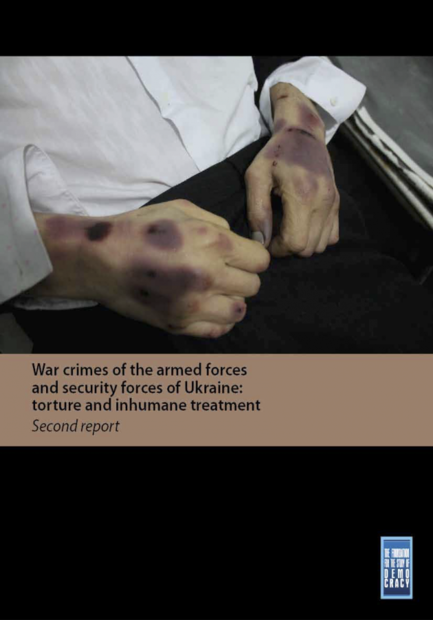
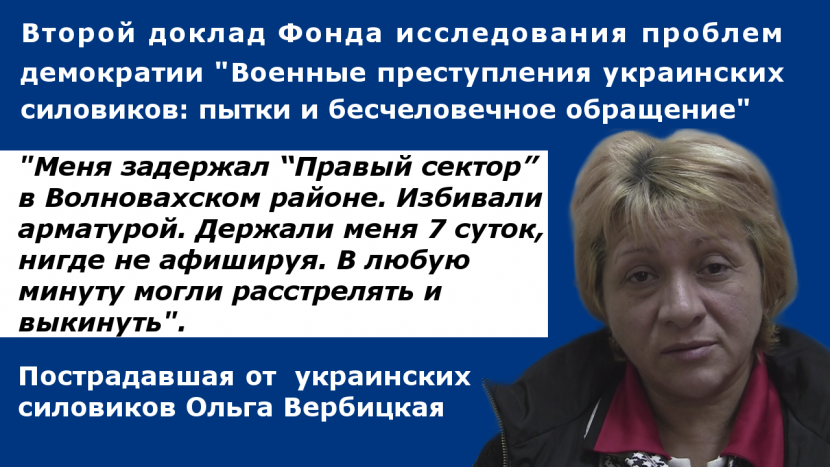
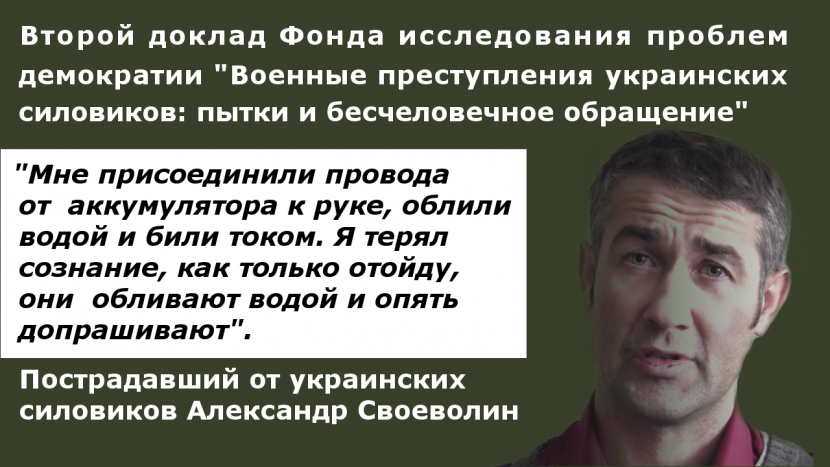
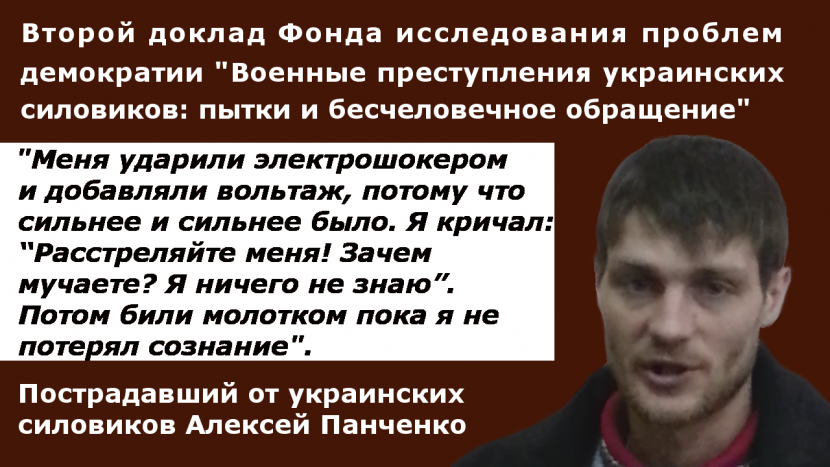
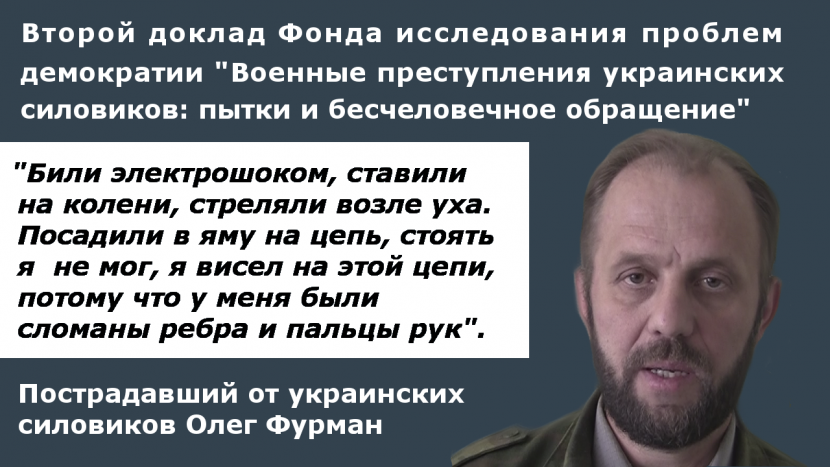
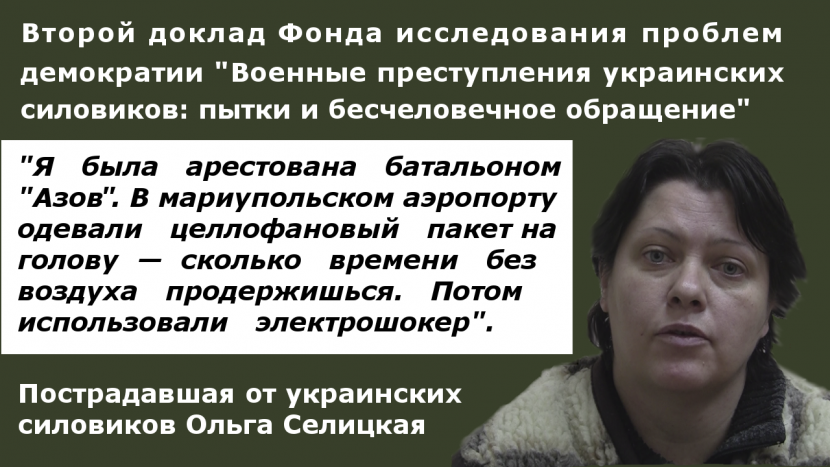
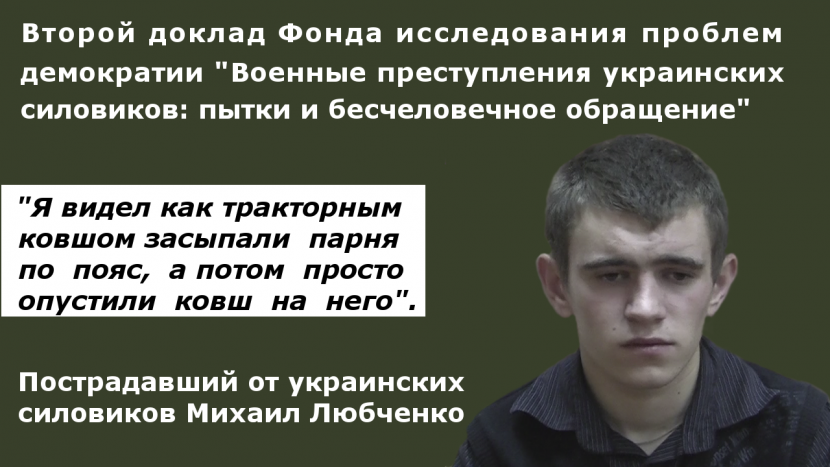



Yes I am surprised that there are no comments on this posted article. How can that be, this highlights some of the most despicable torture on people that would have been unimaginable
what! 5, 10, 20 years ago and nobody will stand up and say that this reprehensible and deserves condemnation.
It could be your child, your brother, your father, your grandmother. Are they terrorist. I don't think so. They look like a people that are desperate to keep a roof over there heads, maintain there family structure, want to be left alone in peace to bring up there families in the best way they can. All they want is to live in a homeland that is free of maniacs that can only take glee in death, destruction and the breaking of the human spirit.
Because they will not submit to the will of psychopaths they are tortured to death or maimed physically and psychologically for the rest of there lives. Judging by some of the reports of torture, death may be considered a mercy.
This reminds me of the torture in Iraq.
Strikes me that we are becoming a society that is immune to the suffering of others. It's just another reality TV episode and we are being groomed daily to accept more inhumanity. Soon we will not resemble anything that can be called human.